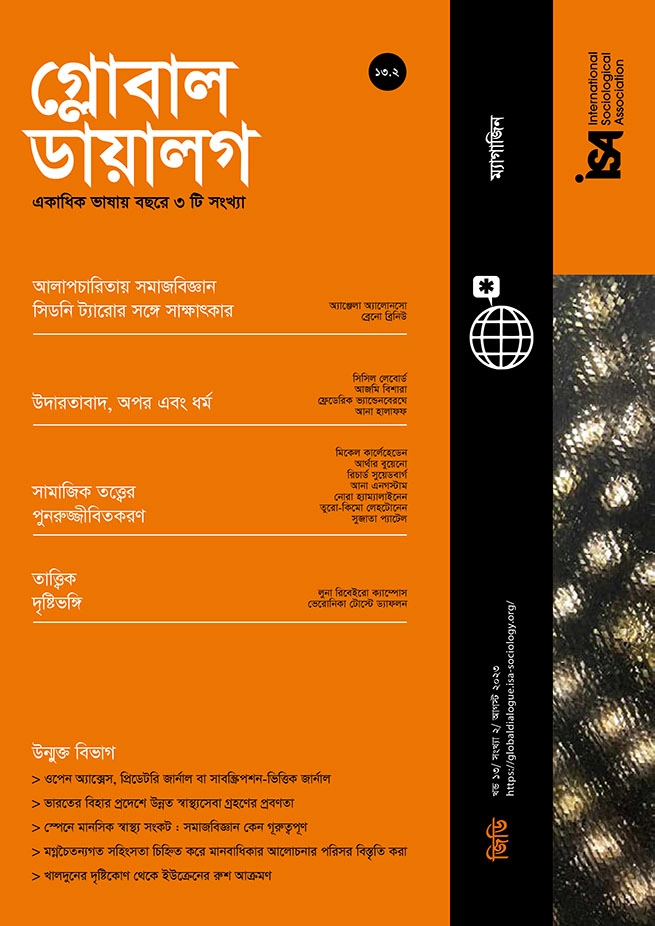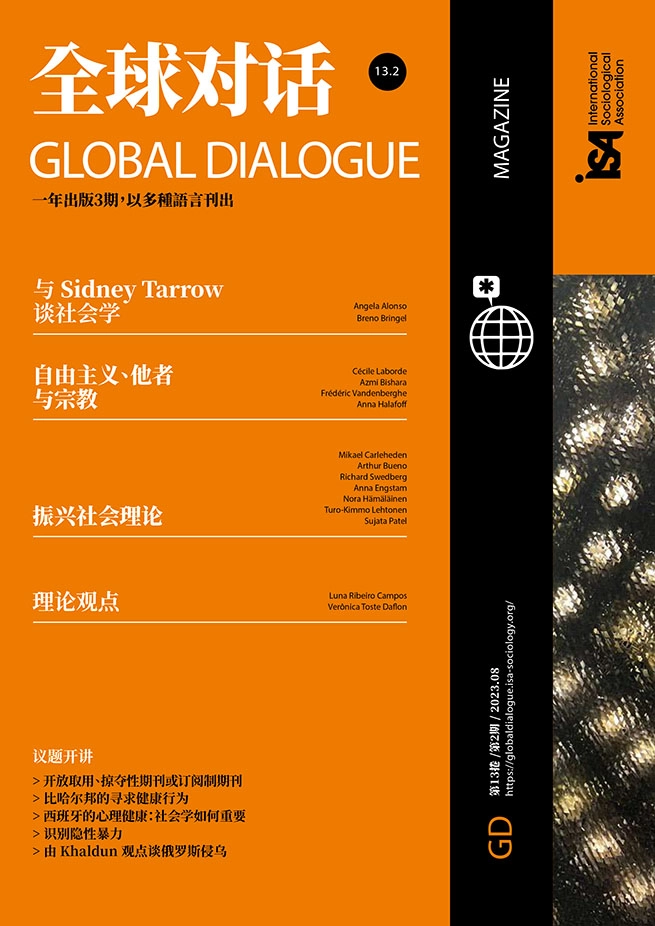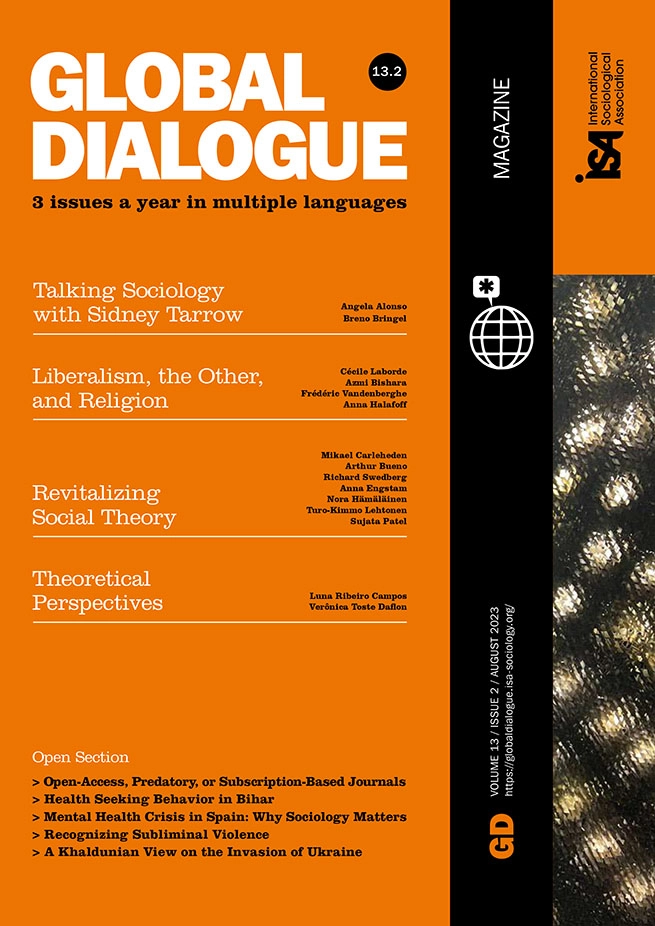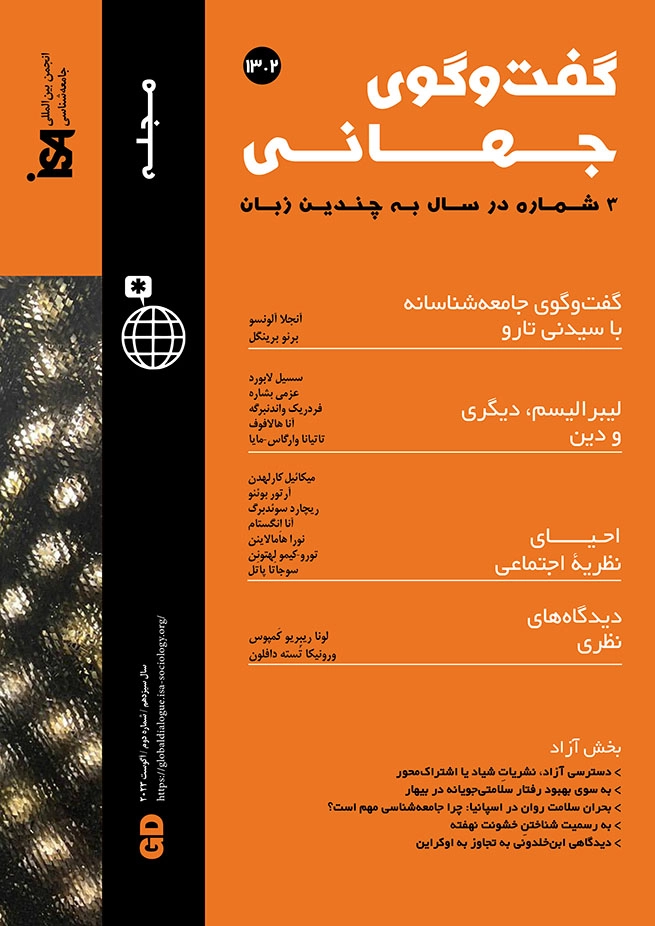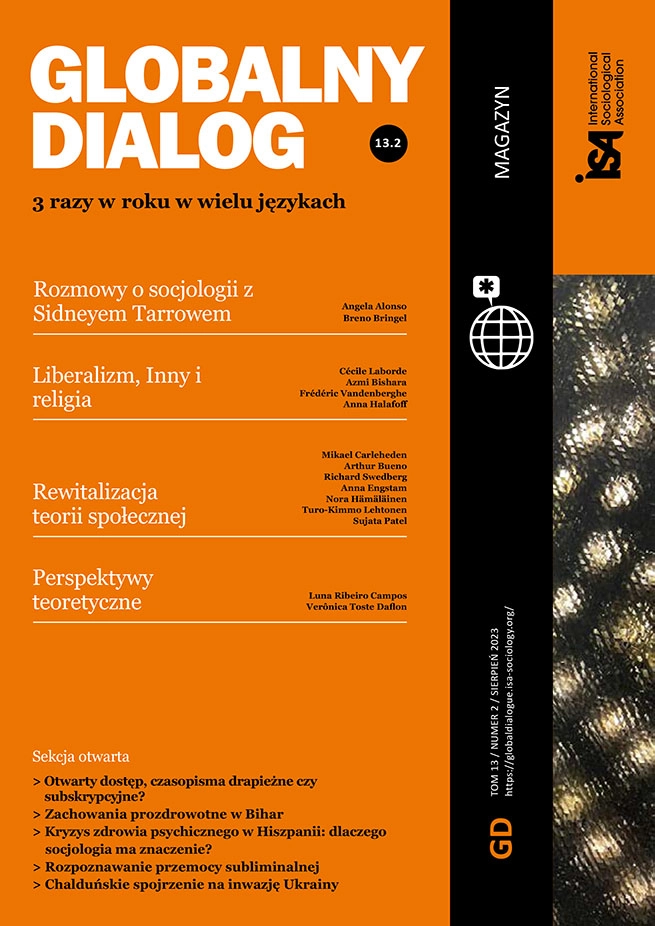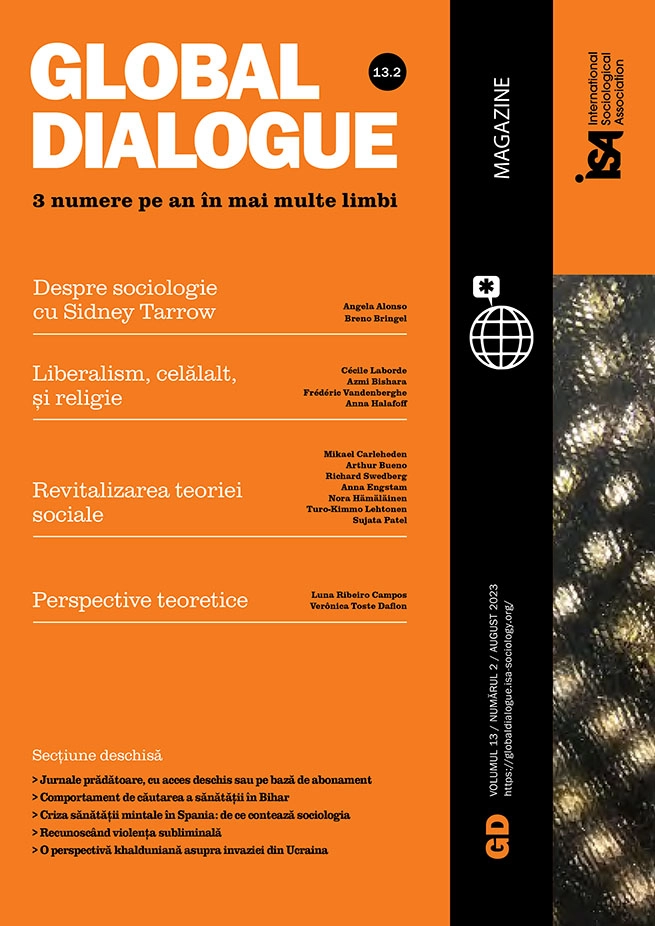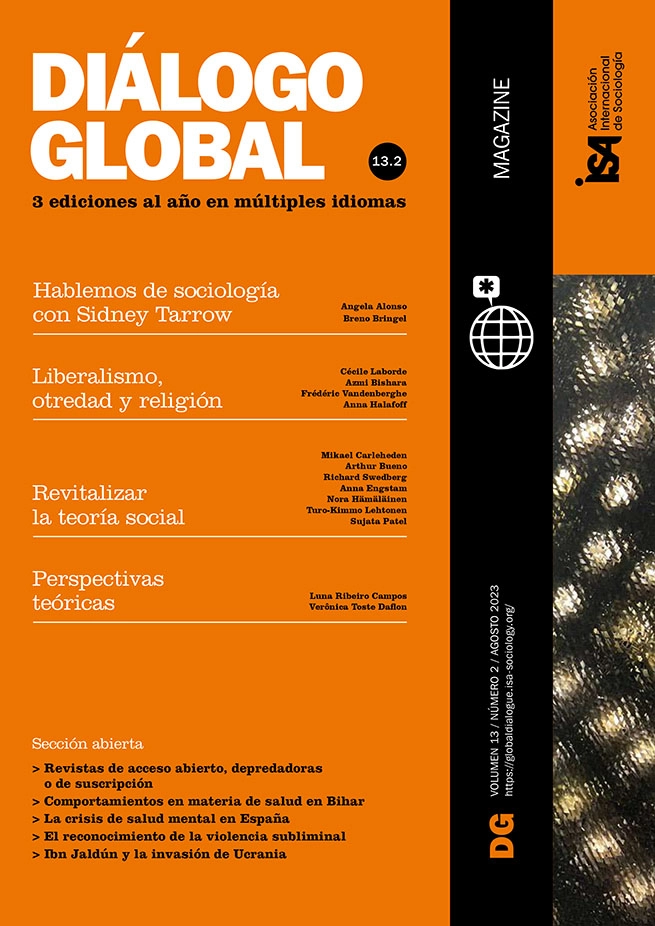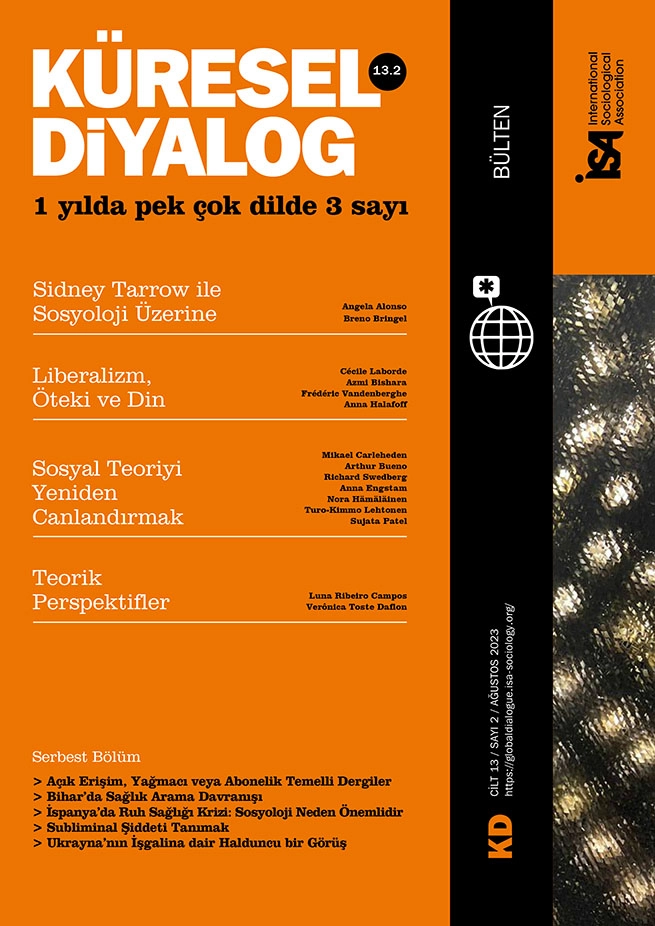Recently, a colleague from a European university asked me to contribute an article for a special issue on sociological theory in an English-language open-access journal that she edits. I had not heard of the journal but agreed immediately given that it would mean that if published (after reviews), the paper could potentially be read around the world. This would overcome the circulation bottleneck that exists today in flows of professional knowledge which are dominated by journal subscriptions and article payments. As we all know, subscriptions and article processing payments are not subsidized by most governments, universities, research institutes, or research grants. Consequently, outreach is restricted and divisions are created in flows of information and knowledge across national and global scholarly communities. But a query about the journal led me to discover how the academic community views open access; most of my colleagues argued that open-access journals are largely predatory while subscription-based journals are professional. I was puzzled: why do my colleagues think this, when open access allows for free circulation of scholarship and encourages dialogue and conversation across academic communities?
An optimistic beginning
The open access (OA) movement emerged in the 1990s when the Internet became available as a means of communication and consequently redefined publishing, which till then had been based on printed material. The movement soon gained significance and in 2001 the Budapest Open Access Initiative (BOAI) defined OA as free availability of peer-reviewed research “on the public internet, permitting any users to read, download, copy, distribute, print, search, or link to the full texts of these articles, crawl them for indexing, pass them as data to software, or use them for any other lawful purpose, without financial, legal, or technical barriers other than those inseparable from gaining access to the internet itself.” BOAI also states that all intellectual rights of the article rest with the author. This definition resonates with Creative Commons licenses.
With bandwidth increasing steadily, it was expected that the publishing costs per research paper would decrease as printing and distribution were removed from all budgets. This would lead, it was presumed, to most journals becoming OA.
Claims of predation
However, no such sea change has occurred. A recent assessment suggested that in 2013, only 25% of published papers were part of OA journals. Why has the movement not captured the imagination of all scholars? Part of the reason is an assumption that most OA journals charge article processing fees and thus are predatory journals: “anything can get published if you pay.” There is a widespread perception that OA journals are not professionally competent, have fake editorial boards, and often do not carry out rigorous reviews of papers.
The term predatory for such journals was first used by the librarian Jeffrey Beall who, since early 2010, has been campaigning against OA. He has put up a list of predatory journals on the Internet. For Beall: “Predatory publishers use the gold (author pays) open access model and aim to generate as much revenue as possible, often foregoing a proper peer review.”
New literature suggests Beall may not be the only one campaigning against OA. In addition, big publisher trade associations and their lobbyists have promoted the idea that OA is a danger to the peer-review system. Their main argument has been that subscription-based journals are key to good practices, especially of the peer-review system, and that these are institutionalized through their alliances with learned societies, professional associations, and research institutes. Despite recognizing that their business models are aimed at profit, they also contend that they share their revenues with such organizations (e.g., the International Sociological Association’s budget is hugely dependent on publication royalties) and thus promote knowledge production that is both professional and global. Additionally, they suggest that they protect the intellectual property rights of authors and research institutes.
Therefore, most learned societies and professional associations lend their support to the big publishers. In turn, those publishers have aggressively intervened in the public domain to ensure that their journal rights are protected against any form of open access. For instance, in 2012, some publishers (Oxford, Cambridge, and Taylor and Francis) took a case to the Indian courts against a Xerox shop at Delhi University for the sale of photocopied books and pages. Both the University and the High Court came out in support of the shop and the case was dismissed.
The need to do away with institutionalized binary divisions
That predatory journals exist is not in doubt. Together with India and Iran, the USA and Japan have the highest numbers of such journals and regulatory bodies including universities do not recognize papers published in them for performance evaluation. However, are all OA journals really predatory in nature? Recent research into Beall’s list suggests that the major flaws he listed as applying to OA journals are also present in subscription-based journals. Additionally, not all OA journals charge article processing fees. The Directory of Open Access Journals (DOAJ) states that of 18,000+ OA journals available on the Internet today, some 13,000 do not charge a processing fee. In the same research just mentioned, the authors argue that instead of presenting a dichotomy between OA and subscription-based journals, it is important to ask more reflexive questions concerning how to initiate and institutionalize good reviewing practices and how to make these transparent for both OA and subscription-based journals. In addition, it is also important to ask whether these practices include those perfected in different parts and regions of the world.
While there is need for further research on this theme, it is my contention that the publishing industry is part of the knowledge ecosystem that thrives on generating divisions between regions and language communities with regard to the production and circulation of knowledge. The publishing industry feeds into this system and institutionalizes it. This ecosystem came to be organized in the aftermath of the Second World War when universities and research institutes increased exponentially in the Global North and across the world. With this spread, a perspective that knowledge fields within the sciences, social sciences and humanities produced in the Global North are universal and can be emulated by academic communities across the world was institutionalized.
That ecosystem then designated the responsibilities for the production of knowledge to universities, institutes and laboratories in Europe and North America, and the knowledge was then circulated via journals and books published and printed by the private sector. Soon, those universities and research institutes became the main consumers of learned journals and books, thus creating a symbiotic relationship between them and private publishing houses. No wonder publishers in the USA and UK classify their products as being part of the international markets while knowledge-products of other countries are classified in terms of the region. In recent times, this ecosystem has got a boost as universities have demanded stringent audits to examine teacher performance, giving subscription-based journals further legitimacy. The OA movement subverts this ecosystem and is thus a threat to all who have a stake in it.
Where does this leave scholars from various parts of the world who wish to publish or read new research? Where also does it leave publications from across the world which wish to encourage distinct content(s), new styles of writing, and different review practices? As scholars who seek global conversations, I hope we can start a discussion on this theme.
Sujata Patel, Retired Professor, University of Hyderabad, India, and 2021 Kersten Hesselgren Visiting Professor, Umea University, Sweden <patel.sujata09@gmail.com>






